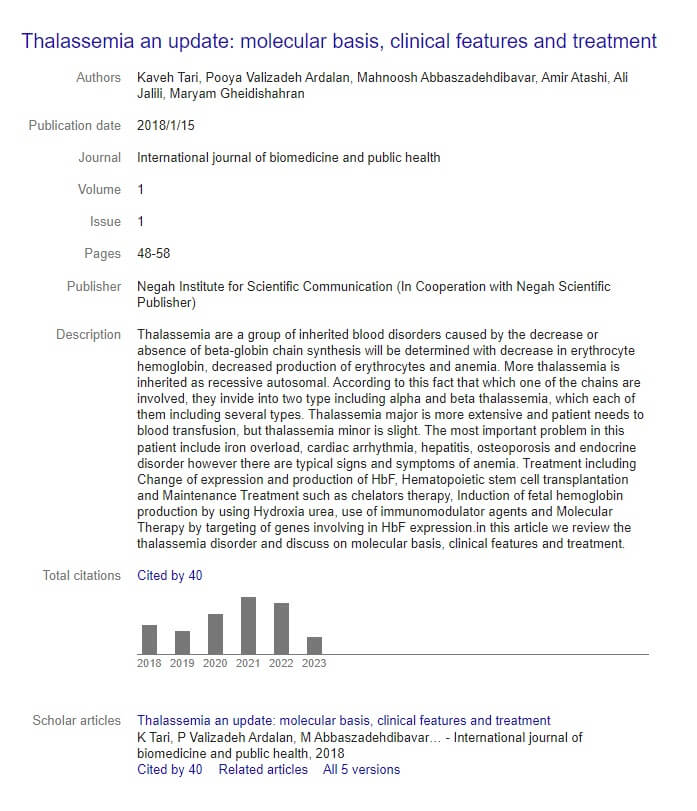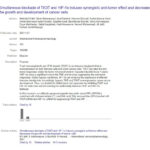Thalassemia an update molecular basis, clinical features and treatment

Authors Kaveh Tari, Pooya Valizadeh Ardalan, Mahnoosh Abbaszadehdibavar, Amir Atashi, Ali Jalili, Maryam Gheidishahran
Publication date 2018/1/15
Journal International journal of biomedicine and public health
Publisher Negah Institute for Scientific Communication (In Cooperation with Negah Scientific Publisher)
Description Thalassemia are a group of inherited blood disorders caused by the decrease or absence of beta-globin chain synthesis will be determined with decrease in erythrocyte hemoglobin, decreased production of erythrocytes and anemia. More thalassemia is inherited as recessive autosomal. According to this fact that which one of the chains are involved, they invide into two type including alpha and beta thalassemia, which each of them including several types. Thalassemia major is more extensive and patient needs to blood transfusion, but thalassemia minor is slight. The most important problem in this patient include iron overload, cardiac arrhythmia, hepatitis, osteoporosis and endocrine disorder however there are typical signs and symptoms of anemia. Treatment including Change of expression and production of HbF, Hematopoietic stem cell transplantation and Maintenance Treatment such as chelators therapy, Induction of fetal hemoglobin production by using Hydroxia urea, use of immunomodulator agents and Molecular Therapy by targeting of genes involving in HbF expression.in this article we review the thalassemia disorder and discuss on molecular basis, clinical features and treatment.
Total citations Cited by 40
Scholar articles Thalassemia an update: molecular basis, clinical features and treatment K Tari, P Valizadeh Ardalan, M Abbaszadehdibavar… – International journal of biomedicine and public health, 2018
Cited by 40 Related articles All 5 versions


